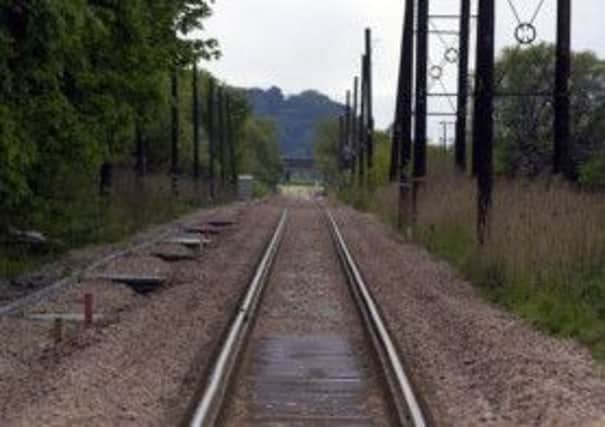Years of delays on Stirling-Alloa-Kincardine line


Week-long closures of the Stirling-Alloa-Kincardine line start next month, when parts of the route will be largely rebuilt because of problems with the way it was constructed.
Rail industry insiders said the repairs were expected to cost up to £20 million – or nearly one quarter of the £85m original cost of the route.
Advertisement
Hide AdAdvertisement
Hide AdNetwork Rail, which did not build the 13-mile line, said the first shutdown would be in the week starting on 23 February, and affect only coal trains.
A second closure, from 23 March, is expected to force passengers to switch to buses between Alloa and Stirling.
The Scotsman understands further week-long closures are expected at least once a year until 2019 to complete the work.
The line is used by more than 400,000 passengers a year and extra trains have been added because of demand.
An industry source said: “There will be more closures, with the same level of activity over the next five years, with work of a similar type at different locations. It is estimated to cost a total of £15-20m.”
Passenger trains run over half of the line, as far east as Alloa, which have reconnected the Clackmannanshire town to the rail network after a gap of 40 years. Coal trains run on to Longannet Power Station near Kincardine in Fife.
Network Rail said the repairs would involve digging down to the line’s foundations, below the ballast on which the rails sit.
A spokesman said it would involve “re-sleepering, drainage and track formation works”, first at Kennet, then at Cambus.
Advertisement
Hide AdAdvertisement
Hide AdHe said: “We are working closely with freight and train operators, and the relevant local authorities, to minimise disruption caused by the works.”
The line, which was the first to be built in Scotland after devolution, cost more than twice its budget, and was finished two and a half years late in 2008.
The problems stemmed from the way the track was laid on soft ground, with the railway moving out of shape. The situation was made worse by wetter conditions and more coal trains than anticipated.
Public spending watchdogs criticised the management of the project, which was run by Clackmannanshire Council and the now-scrapped City of Edinburgh Council transport body Tie, before being taken over by the Scottish Government’s Transport Scotland agency in 2007. An Audit Scotland report in 2008 blamed “weak project governance” and “misaligned roles and responsibilities”.
An industry expert agreed the fault did not lie with the construction firms involved, BAM Nuttall and Babcock Rail.
They said: “The contractors were pulling their hair out about the management.”
A ScotRail spokesman said: “We are working with Network Rail to keep disruption to our customers to a minimum. This will include providing replacement transport where necessary during these works.”
David Sidebottom, acting chief executive of watchdog body Passenger Focus, said: “Passengers won’t be happy about the disruption this will cause, but most will understand it is necessary.”